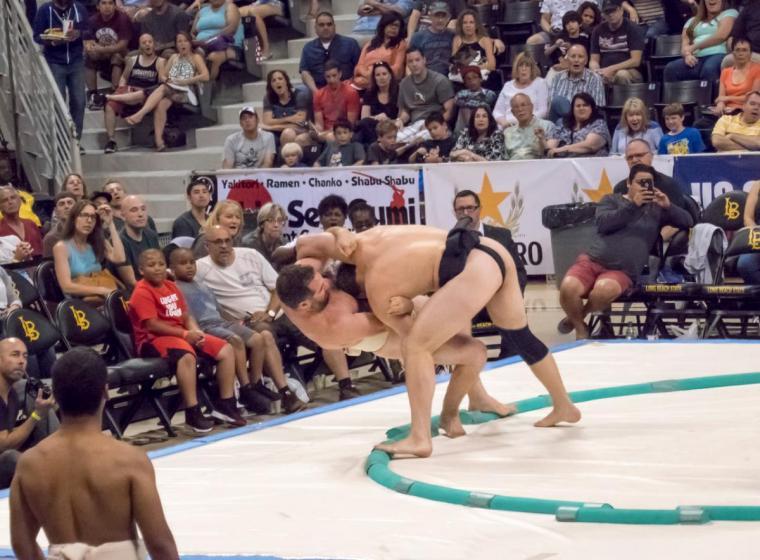
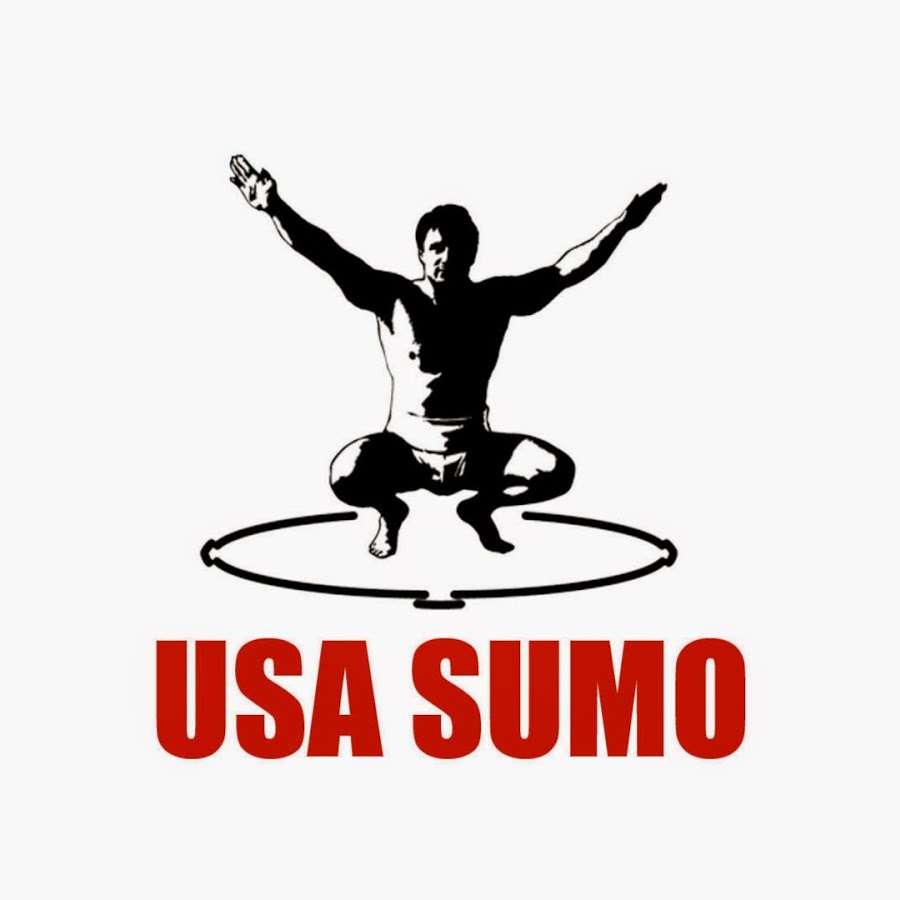 www.usasumo.com
www.usasumo.com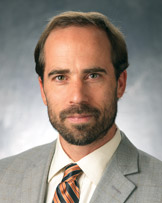
USA Sumo: USA Sumo was established in 1998 and is dedicated to teaching techniques and tradition to men and women; training world-class sumo athletes who compete on an international basis; educating the public about sumo; promoting the sport itself and supporting efforts to make it an Olympic sport.
The organization’s hallmark competition, the US Sumo Open, is the largest annual sumo tournament in the world outside of Japan. Since 2001, over 400 elite sumo wrestlers, including numerous past and present World Sumo Champions, have competed.
USA Sumo has also brought sumo into the entertainment limelight, with featured sumo stars appearing on dozens of TV shows, commercials, and films. USA Sumo also collaborated on major pro sumo exhibition tournaments like Grand Sumo Las Vegas and Grand Sumo Los Angeles. In addition, the organization has a series of demonstrations, Sumo+Sushi shows, offered nationwide.
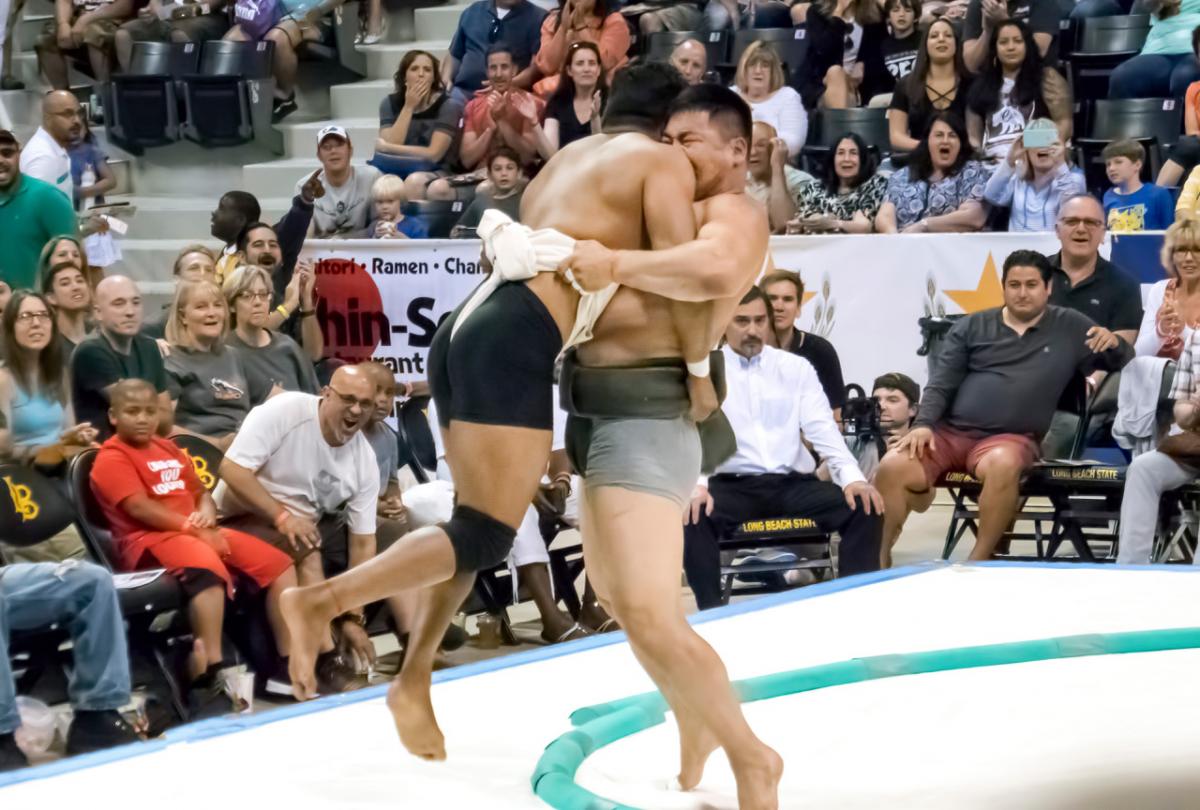
Andrew Freund: It’s still relatively grassroots, with activity in clubs. There are a few pockets where it is very popular.
SDM: Is USA Sumo a national governing body?
Freund: We’re not officially a governing body but we are connected to the International Sumo Federation.
SDM: USA Sumo’s key event is the US Sumo Open. According to your website, it’s the largest annual sumo event in the world outside Japan.
Freund: Yes – we have produced that here in California for 17 years in a row. It is also the biggest sumo event in terms of fans. We use the Walter Pyramid, which is a 5,000-seat, indoor multi-purpose arena on the campus of Long Beach State University. We get in the 4,000 to 4,500 range of spectators.
SDM: How many people compete?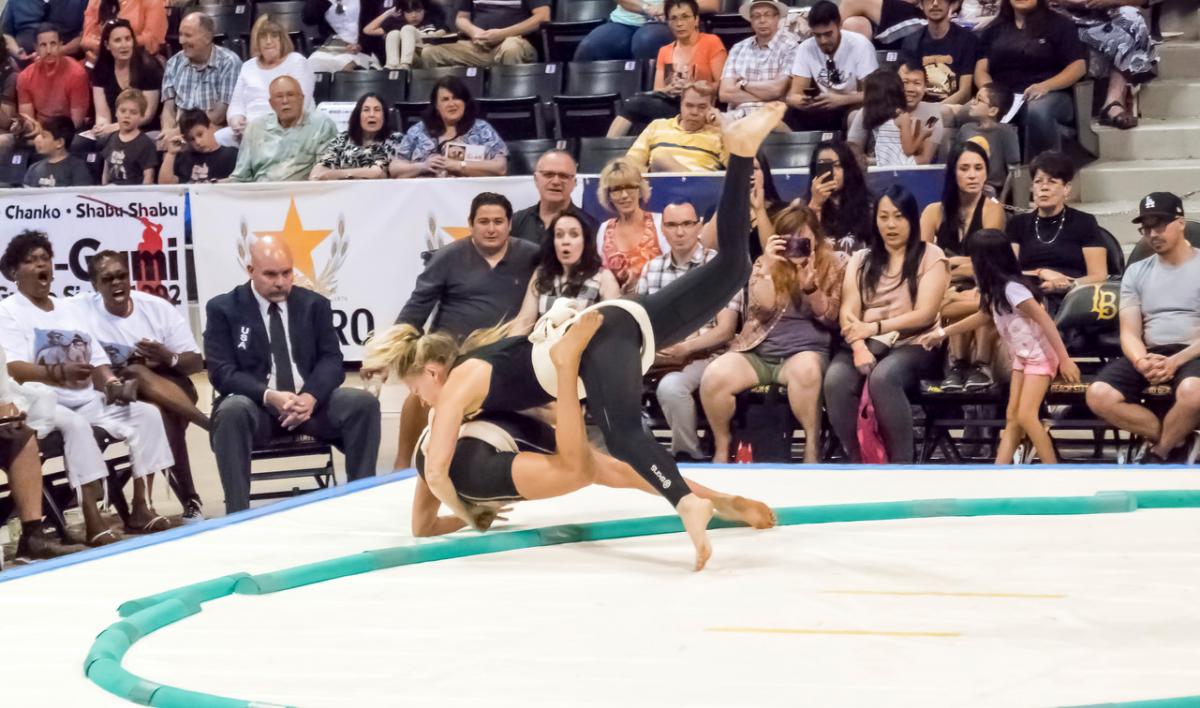
Freund: Our tournament usually has 60 competitors; about 40 of those are from overseas. The athletes who receive most of the medals are those from outside of the U.S.
SDM: Why is that?
Freund: People start training earlier. In Japan, for example, an athlete might start in middle school. In the U.S., people might not come into it until they’re in their twenties or maybe even older.
SDM: Do people in the U.S. come into sumo from other sports?
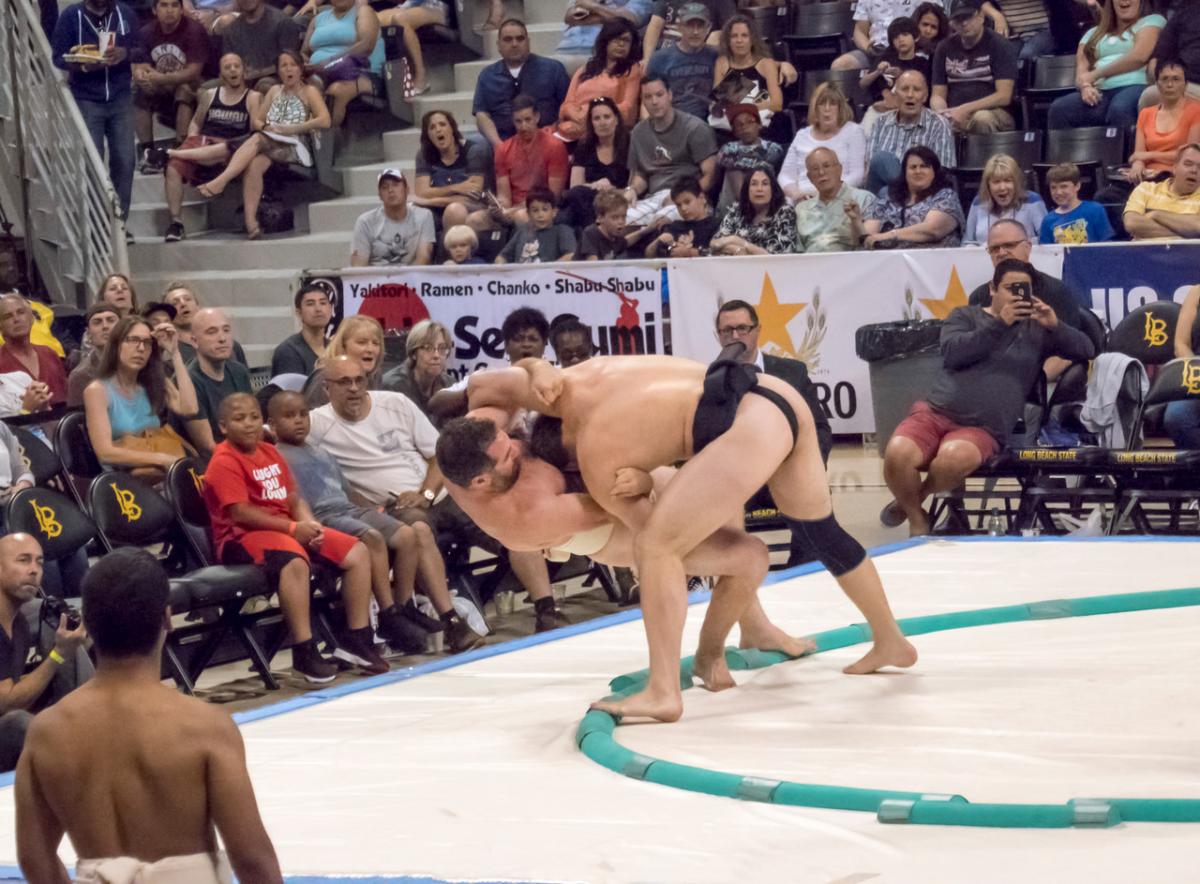 Freund: Yes – we see people who have been in football, judo, all the martial arts. There are some transferrable skills.
Freund: Yes – we see people who have been in football, judo, all the martial arts. There are some transferrable skills.
SDM: Are there misconceptions about what sumo really is?
Freund: Always. The universal reaction among people seeing it for the first time is ‘That wasn’t at all what I expected it to be like.’ People have these ideas about these big fat guys circling each other and bumping bellies. When they actually see sumo wrestling, they are shocked by the dynamic action. It’s all about strength, speed and technique, for women as well as for men.
SDM: What is the male/female split?
Freund: It's about 80 percent male, 20 percent female.
SDM: Your website has information about the rules of the sport, and the training involved. Do you get beginners at events like the US Sumo Open?
Freund: Yes – at this point, there is no official competition requirement, but we highly encourage competitors to get a modicum of training. We do see people signing up to compete and they just don’t know the sport. Even people who are really skilled – national champions in freestyle wrestling or Greco-Roman wrestling – 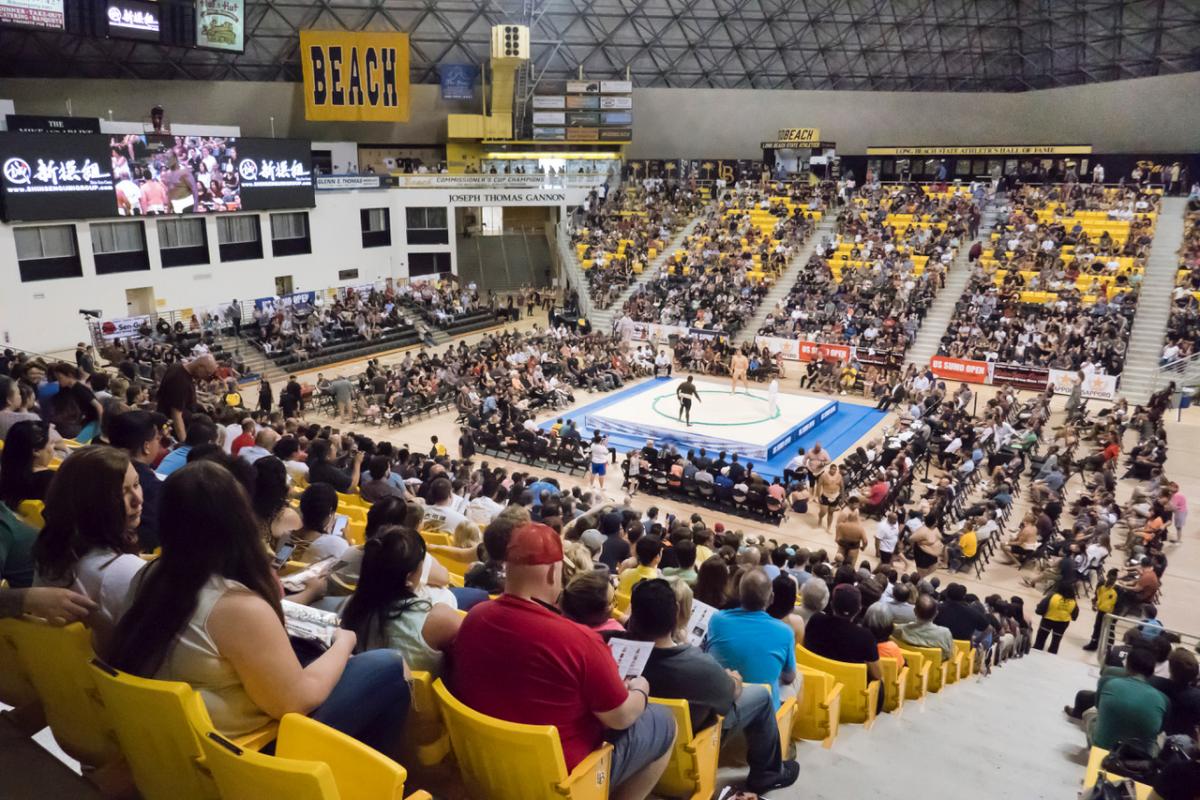 just get pushed over time and again in sumo. You really need to put the time in to learn it and practice it. When we have beginners, we have a little talk with them and send them some suggestions and encourage them to get some training in. After all, in terms of our recent US Sumo Opens, probably one-third to one-half of all the athletes compete regularly on the international level. These are the top guys from various nations. Maybe another one-fourth have some experience but they’re not competing as regularly and about another one-fourth are newbies.
just get pushed over time and again in sumo. You really need to put the time in to learn it and practice it. When we have beginners, we have a little talk with them and send them some suggestions and encourage them to get some training in. After all, in terms of our recent US Sumo Opens, probably one-third to one-half of all the athletes compete regularly on the international level. These are the top guys from various nations. Maybe another one-fourth have some experience but they’re not competing as regularly and about another one-fourth are newbies.
SDM: Where should people start, once they’re interested?
Freund: We encourage them to go to our website and e-mail us and we can help them out.
SDM: What kind of a facility are you looking for if you’re going to hold a sumo event?
Freund: It’s relatively easy to do a sumo set-up. You can do it inside or outside, but indoors is usually safer. You have a 15-foot diameter dohyo or sumo ring, and when you allow some space for the mat and a buffer zone, it comes to about 30 feet by 30 feet. You ideally want a four-sided seating arrangement.
DM: USA Sumo also has an entertainment component. Is that all part of expanding the profile of the sport?
Freund: Yes – I first became involved with sumo about 20 years ago, competing, practicing and coaching, and I noticed w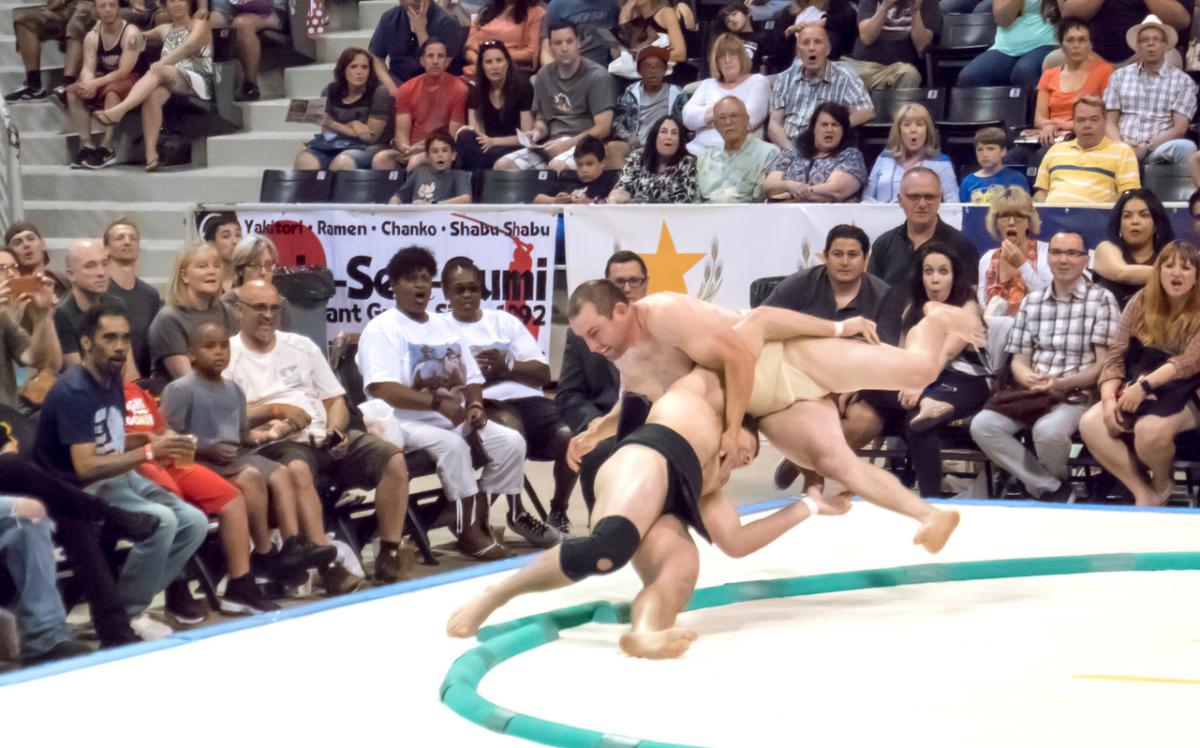 e were getting requests fairly consistently from people who wanted sumo wrestlers to appear in movies, on TV, everything. Now, our athletes have been involved in 70 to 80 print ads, films, shows, live promotional events – pretty much every week, we do one, two, sometimes three or four shoots. We get a lot of requests for athletes to appear at tournaments, corporate events, festivals, expos – we have had wrestlers performing in the infield during NASCAR events. The exoticism and the rarity are a huge part of the appeal.
e were getting requests fairly consistently from people who wanted sumo wrestlers to appear in movies, on TV, everything. Now, our athletes have been involved in 70 to 80 print ads, films, shows, live promotional events – pretty much every week, we do one, two, sometimes three or four shoots. We get a lot of requests for athletes to appear at tournaments, corporate events, festivals, expos – we have had wrestlers performing in the infield during NASCAR events. The exoticism and the rarity are a huge part of the appeal.
SDM: Do you see it becoming an Olympic sport alongside other wrestling disciplines? It is already in the World Games.
Freund: You’d think it was a shoo-in. But the way sports are chosen seems so subjective sometimes. This is a sport that is a national treasure in Japan. There are already several popular martial arts in the Olympics, and now that sumo is practiced by both men and women, it could be there.
SDM: It would be a great way of getting more people into the sport.
Freund: Yes – one thing I’ve found out is that when people see it for the first time, they are hooked. A lot of people will show up after the US Open and say “I really liked it and I want to compete.”

